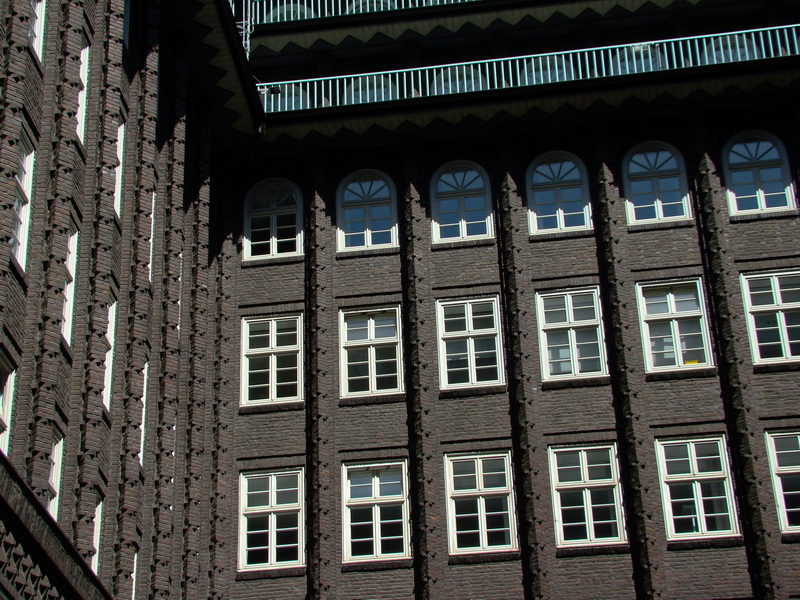English 




Views: 222 Author: Astin Publish Time: 2025-02-07 Origin: Site



Content Menu
● Benefits of Painting Aluminum Window Frames
● Step-by-Step Guide to Painting Aluminum Window Frames
>> Step 1: Preparation and Cleaning
>> Step 2: Sanding and Priming
>> Step 3: Painting Techniques
>> 1. What is the best type of paint to use on aluminum window frames?
>> 2. Do I need to prime aluminum window frames before painting?
>> 3. How do I prepare aluminum window frames for painting?
>> 4. Can I use a spray gun to paint aluminum window frames?
>> 5. How many coats of paint should I apply to aluminum window frames?
Aluminum window frames, prized for their insulation and durability, may sometimes lack the aesthetic appeal desired for a home's exterior. Painting these frames offers an affordable and straightforward solution to enhance visual appeal, match a specific color scheme, and protect the metal from the elements. This article provides a comprehensive guide on how to paint aluminum window frames, ensuring a professional and lasting finish.

Painting aluminum window frames offers several advantages:
- Aesthetic Improvement: Painting allows homeowners to customize the color of their window frames to complement their home's exterior. This enhances the overall curb appeal and creates a more cohesive and attractive look.
- Cost-Effectiveness: Painting is significantly cheaper than replacing windows. It provides a budget-friendly way to update the appearance of a home without incurring the high costs of new window installation.
- Protection: A fresh coat of paint can protect the aluminum from corrosion and weather damage. This extends the lifespan of the frames and prevents costly repairs in the future.
- Energy Efficiency: While aluminum is already a good insulator, painting can add an extra layer of protection, helping to lock in heat during winter and keep the house cool during summer.
- Increased Home Value: Enhancing the appearance of window frames can increase the overall value of a home, making it a worthwhile investment for homeowners looking to sell.
Before starting the painting process, gather all the necessary tools and materials. Having everything on hand will streamline the project and ensure a smooth, efficient workflow.
- Cleaning Supplies: Warm soapy water, a kitchen sponge or microfiber cloth, a soft-bristled brush or vacuum cleaner, glass cleaner, and clean cloths.
- Surface Preparation: Fine wire wool or fine-grit sandpaper (120-grit), painter's tape or masking tape, drop cloths or plastic sheeting, and a spatula or similar tool for stirring paint.
- Painting Supplies: Metal primer (specifically for aluminum), exterior paint (acrylic or epoxy), paintbrushes (small, high-quality with synthetic bristles), a paint sprayer (optional, for quicker application), a paint roller (optional, for larger surfaces), and a paint tray (if using a roller).
- Safety Gear: Safety glasses, gloves, coveralls, and a respirator or mask (especially when spraying).
- Additional Tools: A razor knife (for removing excess paint), a drill with wire brush attachment (for removing old paint), and acetone or solvent (for removing wall paint).

Follow these detailed steps to achieve a professional-looking paint job on your aluminum window frames.
Proper preparation is crucial for ensuring the paint adheres well and the finish is smooth and long-lasting.
1. Remove Dirt and Debris: Begin by removing any dirt, dust, or debris from the frame using a soft-bristled brush or a vacuum cleaner with an attachment suitable for cleaning windows.
2. Wash the Frames: Use warm soapy water and a sponge or microfiber cloth to clean the entire surface of each frame thoroughly. Washing up liquid works well for this purpose. Be sure to remove any grease or grime that may have accumulated over time, as this can affect how well the paint adheres to the metal.
3. Remove Stubborn Marks: For stubborn marks, use the abrasive side of the sponge. Alternatively, use a solvent like acetone to break down any wall paint without being too harsh on the original finish.
4. Rinse and Dry: After washing, rinse off all soap residue with clean water and let the frames dry completely. This may take at least 24 hours to ensure they are fully dry.
5. Inspect for Rust or Corrosion: Carefully inspect each frame for signs of rusting or corrosion damage. If there are areas where rust has formed, use sandpaper (120-grit) until you reach bare metal before proceeding further.
Sanding and priming are essential steps that will ensure a smooth and long-lasting finish.
1. Sanding: Use sandpaper or a sanding block to remove any loose paint or rust from the frame. This step is essential as it helps create an even surface for the primer and paint to adhere to. If the frames are textured, use a stiff wire brush and soapy water, moving parallel to any grooves.
2. Masking: Apply painter's tape or masking tape to the glass and surrounding areas to protect them from paint. Ensure the tape is applied nice and tight to the frame to get a clean edge. Also, mask off the edges of the frame to stop paint from getting on the walls.
3. Applying Primer: Apply a coat of metal primer using a brush, paint sprayer, or spray can. The primer acts as an adhesive layer between the metal frame and the topcoat of paint, ensuring better adhesion while also protecting against corrosion. When selecting your primer, make sure it is specifically designed for use on metal surfaces such as aluminum window frames. Dulux 300g Metalshield Etch Primer Spraypak Light Grey is a good option.
4. Drying Time: Allow sufficient time for the primer to dry completely before moving onto applying your chosen color coat(s). This typically takes 3-6 hours.
Choosing the right painting technique can significantly impact the final result.
1. Spray Gun: Using a spray gun allows for quick and efficient coverage. Ensure you are in a well-ventilated area and wearing appropriate safety gear, such as goggles, gloves, and a respirator.
2. Brushing: Brushing is another effective technique, especially for those who don't have access to a spray gun or prefer a more controlled application. Use high-quality brushes with synthetic bristles. Apply thin coats of paint in long strokes. Avoid overloading the brush with too much paint at once. Work from top-to-bottom or left-to-right, depending on your preference.
3. Rolling: Rollers may be used for applying paint onto larger surfaces; however, they're not recommended for small areas like windowsills since they tend to leave behind bubbles or streaks.
Applying the paint requires patience and attention to detail to achieve an even and professional finish.
1. Check Primer: Before starting, make sure that the primer is completely dry and has cured for at least 24 hours.
2. Mixing Paint: Open the exterior paint tin and stir with a spatula for about a minute to even out the color.
3. Application: When applying paint with a brush or roller, start from one corner of the frame and work your way across in long strokes. Be careful not to overload your brush or roller with too much paint, as this can cause drips and uneven coverage. If you're using spray cans, hold them about 6-8 inches away from the surface of the frame while spraying in even back-and-forth motions until an even coat is achieved. It's important not to overspray, as this will lead to drips and runs on your freshly painted surface.
4. Multiple Coats: Apply two or three thin coats of paint if necessary, but ensure that each coat dries completely before applying another layer; otherwise, it may result in peeling later on. Allow each coat to dry fully and create a gentle key before applying the next.
5. Drying Time: After applying the final coat, allow the paint to dry completely, usually for 1-2 hours, as per the painting instructions.
Once the paint is dry, complete the project with these finishing touches.
1. Remove Tape: Carefully remove the painter's tape by pulling it off at an angle, away from the painted area.
2. Clean Up Excess Paint: If your tape wasn't perfect, use a razor knife to remove any paint that may have gotten on the window, but be careful not to scratch the glass.
3. Final Inspection: Inspect the painted frames for any imperfections or missed spots. Touch up as needed.
4. Reassemble: Reattach any accessories you removed earlier and check that everything is working as intended.
Selecting the right type of paint is crucial for a lasting finish.
- Acrylic Paint: Acrylic paint provides good adhesion, durability, and resistance to fading, but may not last as long as epoxy. A 100% acrylic latex formulation is recommended.
- Epoxy Paint: Epoxy paints offer excellent durability, chemical resistance, and adhesion. They can withstand harsh weather conditions and provide a long-lasting finish, even on exteriors. However, they tend to be more expensive than acrylic.
- Corrosion Inhibitors: For added protection, use an acrylic or epoxy paint specifically formulated with corrosion inhibitors. These provide an extra layer of protection and extend the frame's lifespan.
When painting aluminum window frames, safety should always be a top priority.
- Ventilation: Always work in a well-ventilated area, especially when using spray paints or solvents.
- Protective Gear: Wear safety glasses, gloves, coveralls, and a respirator or mask to protect yourself from paint fumes and debris.
- Proper Disposal: Dispose of used paint, solvents, and cleaning materials properly, following local regulations.
- Ladder Safety: If working at heights, use a stable ladder and take necessary precautions to prevent falls.
Painting exterior aluminum window frames is a straightforward and cost-effective way to enhance the appearance of your home, protect the frames from the elements, and increase energy efficiency. By following the steps outlined in this guide, you can achieve a professional and lasting finish that will improve your home's curb appeal and value. Remember to prioritize preparation, use the right materials, and take necessary safety precautions to ensure a successful project.

The best types of paint to use on aluminum window frames are acrylic and epoxy paints. Acrylic paint offers good adhesion, durability, and resistance to fading, while epoxy paints provide excellent durability, chemical resistance, and adhesion. For added protection, choose a paint specifically formulated with corrosion inhibitors.
Yes, priming is essential for painting aluminum window frames. A metal primer acts as an adhesive layer between the metal frame and the topcoat of paint, ensuring better adhesion and protecting against corrosion.
To prepare aluminum window frames for painting, start by removing any dirt, dust, or debris with a soft-bristled brush or vacuum cleaner. Then, wash the frames thoroughly with warm soapy water and a sponge or microfiber cloth. Remove any rust or loose paint with sandpaper, and apply painter's tape to protect the glass and surrounding areas.
Yes, you can use a spray gun to paint aluminum window frames. Spray guns offer quick and efficient coverage. When using a spray gun, ensure you are in a well-ventilated area and wearing appropriate safety gear, such as goggles, gloves, and a respirator.
Apply two or three thin coats of paint to the aluminum window frames, ensuring that each coat dries completely before applying the next. This will provide a smooth, even finish and ensure the paint adheres properly to the surface.
[1] https://www.thepaintshed.com/tips-advice/how-to-paint-aluminium-window-frames
[2] https://www.homebuilding.co.uk/advice/painting-aluminium-windows
[3] https://windowdigest.com/how-to-paint-aluminum-window-frames/
[4] https://www.wideline.com.au/how-to-paint-and-clean-aluminium-window-frames/
[5] https://www.aikondistribution.com/blog/how-to-paint-aluminium-window-frames-97
[6] https://www.doityourself.com/stry/how-to-paint-an-aluminum-window-frame
[7] https://www.alimax.ltd/news/can-you-paint-aluminium-window-and-door-frames
[8] https://www.workshop.bunnings.com.au/t5/Best-Advice/What-is-the-best-way-to-paint-aluminium-windows/ta-p/81622
[9] https://ottawacitizen.com/life/houseworks-painting-aluminum-window-frames
[10] https://www.workshop.bunnings.com.au/t5/Whole-of-House/How-do-I-paint-over-metal-window-frames/td-p/176712
Top Aluminum Furnitures Manufacturers and Suppliers in Czech Republic
Top Aluminum Furnitures Manufacturers and Suppliers in Poland
Top Aluminum Furnitures Manufacturers and Suppliers in Belgium
Top Aluminum Furnitures Manufacturers and Suppliers in Finland
Top Aluminum Furnitures Manufacturers and Suppliers in Denmark
Top Aluminum Furnitures Manufacturers and Suppliers in Greece
Top Aluminum Furnitures Manufacturers and Suppliers in Portugal
Top Aluminum Furnitures Manufacturers and Suppliers in Austria
Top Aluminum Furnitures Manufacturers and Suppliers in Norway
Top Aluminum Furnitures Manufacturers and Suppliers in Sweden
